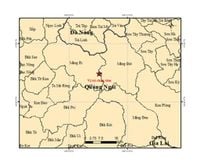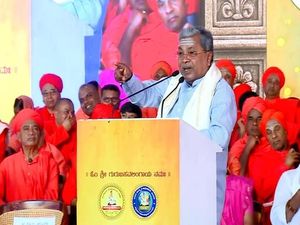In the early hours of October 6, 2025, residents of Mang But commune, Quang Ngai province, were jolted awake by a powerful earthquake that measured 4.9 on the Richter scale. According to the Center for Earthquake Information and Tsunami Warning under the Institute of Earth Sciences, the quake struck at precisely 1:28:42 AM Hanoi time, with its epicenter located at 14.871°N latitude and 108.130°E longitude. The tremor originated at a depth of approximately 8.1 kilometers beneath the earth’s surface.
The incident was not an isolated event. Just hours earlier, on the evening of October 5, the same area experienced a series of four consecutive earthquakes, each registering between 3.4 and 4.3 in magnitude. These earlier quakes, while noticeable, were classified as disaster risk level 0, indicating minimal threat to people or property. However, the main event in the early morning hours was assessed as disaster risk level 1, a notch higher on the scale used by Vietnamese authorities to gauge the potential harm from seismic activity.
For many locals, the night was anything but restful. "I was awake since 1 AM, so I felt the shaking clearly and was scared. I live in Kon Tum city, and I could hear it distinctly, let alone those in Mang But," a resident shared on social media, as reported by Tuoi Tre. The tremors were felt not just in the immediate vicinity but also in neighboring areas, underscoring the quake’s reach and the anxiety it stirred among the population.
Dr. Nguyen Xuan Anh, Director of the Center for Earthquake Information and Tsunami Warning, confirmed the details of the event and provided crucial context. He explained that the recent spate of earthquakes in the region is not entirely unexpected. In fact, since 2021, Quang Ngai and the surrounding areas—formerly part of Kon Tum province, especially the Kon Plong district—have seen hundreds of earthquakes. Some of these have caused widespread tremors, though most have resulted in only minor damage.
The largest of these recent quakes occurred at midday on July 28, 2024, when a magnitude 5.0 earthquake rattled the area. Another significant tremor, measuring 4.7, struck on August 23, 2022. More recently, on September 11, 2025, a magnitude 4.5 quake with a disaster risk level of 1 was also recorded in the region, according to TTXVN.
What’s behind this unusual seismic activity? According to Dr. Nguyen Xuan Anh and several studies cited by Tien Phong, the phenomenon is largely attributed to "triggered earthquakes"—a term used to describe seismic events that are stimulated by human activities, particularly the accumulation of water in large reservoirs. As water levels rise, the increased pressure can seep into faults deep underground, effectively lubricating them and making them more prone to slip. This process, known in scientific circles as reservoir-induced seismicity, has been observed in various parts of the world where large dams and reservoirs have been constructed.
"Triggered earthquakes are the cause of recent seismic events in the former Kon Tum area," Dr. Nguyen Xuan Anh stated. "According to preliminary studies, earthquakes in this region are expected to continue in the future, but it is unlikely that their magnitude will exceed 5.5. However, it is still necessary to conduct more detailed studies to assess earthquake activity in this area." His remarks, reported by TTXVN, reflect a cautious optimism—while the risk of a truly catastrophic quake seems low, the need for vigilance and further research remains high.
Vietnam’s official disaster risk classification system, as defined by Decision 18/2021/QD-TTG of the Prime Minister, designates a level 1 risk for earthquakes when ground shaking intensity, as measured on the surface, reaches levels V to VI on the MSK scale. Such events, while potentially alarming, typically result in only minor, easily manageable damage to people and property. The authorities emphasize that these incidents are generally well within the capacity of local emergency services to handle.
Despite this, the psychological impact on residents should not be underestimated. Social media has been abuzz with firsthand accounts of the tremors, and many people have expressed concern about what the future might hold. It’s not just the shaking itself that unsettles people; it’s the uncertainty of when the next quake might strike and how severe it might be. For those living in areas with a history of seismic activity, each new tremor is a stark reminder of the unpredictable power of nature.
In response to the recent earthquakes, the Center for Earthquake Information and Tsunami Warning has ramped up its monitoring efforts. Dr. Nguyen Xuan Anh assured the public that his team is closely tracking all seismic developments in the region. "We are continuing to monitor seismic developments closely to provide timely information and warnings if there are any abnormalities," he said. This commitment to transparency and rapid communication is vital in maintaining public trust and ensuring that people have the information they need to stay safe.
Looking at the broader picture, Quang Ngai’s experience is not unique. Across the globe, communities living near large reservoirs or in tectonically active regions face similar challenges. The science of earthquake prediction remains notoriously difficult, but advances in monitoring technology and data analysis are helping researchers better understand the complex interplay between natural and human-induced seismicity.
For now, the people of Mang But and surrounding areas will have to remain alert, but not alarmed. While the recent earthquakes have certainly made their presence felt, the consensus among experts is that the risk of a major, highly destructive event remains low. Nevertheless, the events of early October 2025 serve as a timely reminder of the importance of preparedness, vigilance, and ongoing scientific investigation.
As authorities continue to study the region’s seismic patterns and work to improve early warning systems, residents can take some comfort in knowing that their experiences and concerns are being heard—and that the science is catching up with the shaking beneath their feet.




